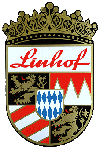From the 1980s to mid-2000s, Kirk’s primary camera is a Linhof Super Technika IV 4×5 that was made in the early ’60’s – just a year or so older than Kirk. Linhof’s Technika series is a very sturdy and rugged line of all-metal (aluminum) technical cameras that have been continually improved and refined since its inception in 1910. Technikas are very well suited for landscape and scenic photography.
The lenses he typically uses consists of a 75 mm f/4.5 Rodenstock Grandagon-N, 90 mm f/6.8 Rodenstock Grandagon-N, 125 mm f/5.6 Fujinon-W, 150 mm f/5.6 Fujinon-W, 240 mm f/9 Schneider G-Claron, and a 355 mm f/9 Schneider G-Claron.
Fujichrome Provia and Velvia Quickloads typically are Kirk’s films of choice. Apertures may vary from f/4.5 to f/90. Exposures have ranged from 1/60 second to 1 hour. For many years, exposures are calculated using either a Minolta Flashmeter IV incident meter or a Pentax Spotmeter V. In 2004, Kirk began using a Minolta Flashmeter VI, which combines both incident and spot meters into one unit. Tripods by Lester Bogen – typically a 3021 tripod with a 3047 3-way tilt head.
For years, Kirk personally printed all of his photographs. He refined his printing skills working as a custom color printer in a commercial photo lab during the late eighties. He is experienced with the Type-C, Type-R, and Cibachrome (now Ilfochrome) processes. He has found the Fujichrome Type-R materials, both Glossy and Super Glossy, to be best suited for working with Fujichrome reversal films. Kirk used un-sharp contrast film masks when desirable to control the inherent contrast found in reversal materials.
Kirk also works with traditional Silver-Gelatin based Black and White materials, favoring Kodak T-Max 100 Readyloads and Fuji Acros 100 Quickloads printed on Ilford Multigrade Fiber-base paper. All Black & White prints are archivally processed and selenium toned for maximum longevity.
In 2007, Kirk moved into the digital world with Sony’s first DSLR, the Sony a100. Sony bought Minolta (well, Konica-Minolta at that point in time) in 2005. Kirk had been using Minolta cameras since the mid-70s, first with his father’s Minolta XD-11 and later with his own Minolta X-700 SLR. With the birth of his daughter, his Nikon digital point-and-shoot was not quick enough to keep up with her, so he bought the Sony a100. In 2012, he upgraded to a Sony SLT-a77 for photographing motorsports and his father’s Lotus 30 Sports Racing car. The a77 had a translucent mirror which allowed a burst mode of 11 frames per second. That frame rate was unheard of for a camera in that price range. DXO Mark gave the a77 an overall sensor score that was only one point less than Sony’s flagship a900 and the Canon 5DMkII, not bad for an APS-C camera.
Kirk had long dreamed of photographing the Milky Way and the night sky. Unfortunately, the a77 was not a great camera for night sky photography. It had too much sensor bloom and noise with long exposures at higher ISO. The Sony a6000 mirrorless APS-C camera, released in 2014, was the first affordable camera that had a sensor that excelled at night photography. Kirk bought one and started down the road of Milky Way photography.
Since starting with the a6000, he’s expanded his range of Sony cameras adding two a6300 and an a7III. Kirk uses several Sony, Rokinon / Samyang lenses, but recently has added a couple Sigma Art lenses.
To see more of Kirk’s camera equipment, follow this link: Kirk’s camera gear
Other Technical Info
A graph of the Macbeth Color Checker Spectral Reflectance Data for the neutral, additive primary, and subtractive primary patches.
Operation Manual for the Noritsu DM-201 Transmission/Reflection Densitometer.
PMK vs. Pyrocat-HD – a Spectral Scan of Two “Pyro” Developers.
Emulsion Making –
An early classic on emulsion making: “Photographic Emulsions” by E. J. Wall, in pdf format.
A Particle Size Distribution Analysis of an emulsion Kirk made.